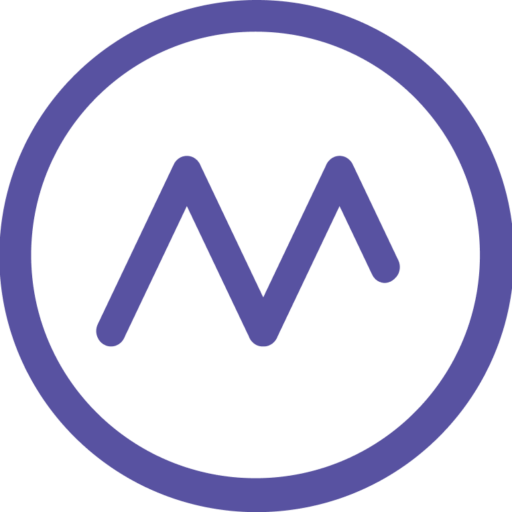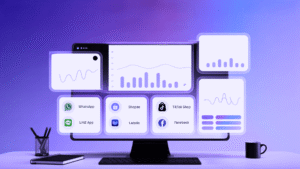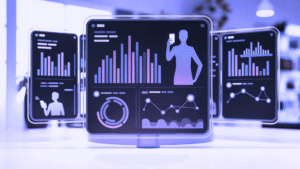Public relations professionals in the Philippines face unprecedented challenges managing brand reputation across multiple media channels. Media monitoring tools have become essential infrastructure for navigating the country’s unique linguistic diversity and dynamic media ecosystem, where traditional monitoring approaches cannot adequately address the complexities of modern PR management.
Recent industry analysis and expert commentary reveal that organizations relying on manual monitoring face significant limitations in capturing brand mentions across print, broadcast, online, and digital channels—especially in multilingual contexts. Media monitoring tools address these gaps by providing comprehensive coverage that manual monitoring simply cannot achieve. Manual monitoring is widely described as time-consuming, error-prone, and incapable of scaling to the fast-growing volume and diversity of media conversations, often leading to substantial gaps in media coverage where many relevant mentions, particularly those in less common languages or on non-mainstream channels, are missed. This creates significant vulnerabilities for Philippine brands operating in today’s interconnected media landscape.
Media monitoring tools have evolved from supplementary resources to essential PR infrastructure. This analysis examines their critical role in modern strategy and Philippine market applications.
Crisis Prevention Through Early Detection
Effective reputation management prioritizes prevention over reaction. Media monitoring tools function as early warning systems, identifying potential threats before they achieve widespread coverage across multiple channels.
Contemporary media monitoring tools detect sentiment shifts across television, radio, print, and digital channels simultaneously. This comprehensive capability proves essential in the Philippine market, where conversations span multiple media formats and languages.
When major Philippine retail chains faced criticism in 2024, organizations with comprehensive media monitoring detected negative coverage rapidly across various outlets, enabling proactive responses before harmful narratives became entrenched. This rapid response capability has become crucial as crisis communication best practices evolve in the digital era.
Information spreads rapidly through Philippine media networks. A single story can cascade across television, radio, print, and digital platforms within hours. Once content appears in Manila Bulletin or broadcasts on GMA Network, narrative control becomes significantly more challenging.
Quantifiable ROI Measurement Using Media Monitoring Tools
Executive leadership requires concrete evidence of PR effectiveness. Modern monitoring platforms provide analytics linking media coverage to quantifiable business metrics, tracking pathways from mentions across all channels to website traffic, brand searches, and conversions.
Also Read: 5 Signs Your Business Needs Media Monitoring Tools Now
Organizations presenting clear correlation data between proactive PR responses and business outcomes achieve superior resource allocation and leadership support. Comprehensive share-of-voice analysis enables benchmarking against industry leaders and evidence-based strategy refinement.
Recent industry research in the Philippines and across Asia highlights how companies embracing advanced media monitoring tools and analytics see marked improvements in crisis response agility and brand sentiment. Reports consistently show that these media monitoring tools deliver measurable ROI by accelerating crisis detection, informing more effective responses, improving campaign targeting, and enabling better benchmarking—delivering concrete business value rather than just anecdotal improvements.
Competitive Intelligence and Market Positioning
Automated monitoring systems deliver comprehensive competitive intelligence across all media formats. Platforms track competitor crisis management approaches across television interviews, press releases, newspaper coverage, and digital responses.
Analysis of competitor media performance reveals coverage patterns and messaging effectiveness, helping organizations identify underserved narrative territories and develop superior positioning strategies. Success increasingly depends on controlling conversation space within integrated media ecosystems.
The Philippine Stock Exchange and Securities and Exchange Commission requirements for listed companies make competitive media monitoring particularly valuable for publicly traded Philippine businesses.
Strategic Media Relationship Development Through Media Monitoring Tools
Monitoring platforms facilitate systematic identification and engagement with journalists, editors, and producers across Philippine media outlets. Advanced systems identify key media professionals in regional markets who cover relevant industry topics.
Rather than relying on cold outreach, organizations can use monitoring insights to join existing conversations where their expertise genuinely adds value, fostering trust and positioning representatives as helpful sources.
The National Union of Journalists of the Philippines and Kapisanan ng mga Brodkaster ng Pilipinas maintain directories that complement monitoring-based relationship building strategies.
Trend Analysis and Predictive Intelligence
Media monitoring platforms employ AI to detect coverage patterns and story developments in early phases. Advanced algorithms identify unusual patterns, emerging angles, and growing topics across television, radio, newspapers, and digital publications.
Trend intelligence informs content strategy, ensuring messaging aligns with topics generating media interest across Philippine broadcast, print, and digital platforms before widespread adoption.
Industry insights from Philippine Marketing Association and Advertising Board of the Philippines regularly highlight emerging communication trends that complement platform-specific intelligence.
Operational Efficiency and Scalability
Manual brand monitoring struggles to keep up with the expanding complexity faced by growing organizations operating across multiple regions and channels. Automated scanning and AI-powered platforms dramatically reduce time spent on manual research—allowing teams to shift from data collection to strategic, relationship-focused activities. While specific averages vary by organization, studies and industry commentary frequently note that automation can save PR and communications teams dozens of hours per month compared to manual tracking and reporting.
Automated systems ensure consistent coverage across all relevant channels, preventing missed mentions due to oversight. Modern platforms include collaboration features for mention assignment and coordinated activities across multiple locations.
Research from the Philippine Public Relations Society indicates that automation in media monitoring significantly increases team productivity while improving coverage accuracy.
Philippine Market Specialized Media Monitoring Tools Coverage
Generic monitoring solutions inadequately address Philippine market requirements. Effective monitoring requires understanding of local media relationships, regional networks, broadcast schedules, and cultural patterns.
Specialized platforms distinguish between Manila-centric coverage and regional stories originating in provincial outlets before achieving national attention. Complete strategies track coverage across traditional print, broadcast networks, radio stations, and digital publications.
The Movie and Television Review and Classification Board and National Telecommunications Commission regulations create unique compliance requirements that specialized monitoring addresses more effectively than global solutions.
Proactive Reputation Management
Contemporary reputation management emphasizes proactive narrative development. Organizations actively participate in shaping discussions across Philippine media channels, positioning initiatives before competitors claim narrative space.
Monitoring systems track coverage variations across regions and formats, recognizing messaging effectiveness varies between Metro Manila television, Mindanao radio, and regional newspapers. Philippine media professionals prefer authentic engagement over corporate messaging, as highlighted in University of the Philippines Diliman research on local communication preferences.
Implementation Framework
Assessment Phase:
- Establish baseline measurements across television, radio, print, and digital channels
- Conduct competitor analysis across all media formats
- Measure current response capabilities and set improvement objectives
- Identify relevant languages and regional dialects
- Map industry outlets and assess coverage gaps
Strategic Development:
- Define monitoring objectives aligned with reputation goals
- Establish response protocols for different threat levels
- Develop team coordination procedures
- Create measurement frameworks connecting activities to outcomes
- Implement crisis escalation procedures
Frequently Asked Questions About Media Monitoring Tools
How do media monitoring tools handle Filipino languages across media formats?
Advanced platforms leverage AI-driven language detection to track conversations spanning television, radio, print, and digital channels—often in real time. Leading Philippine solutions address code-switching (e.g., Taglish) and regional dialects, capabilities that many global tools lack. The Commission on the Filipino Language provides guidelines that inform proper multilingual monitoring approaches in the country.
Do global media monitoring tools cover provincial Philippine media adequately?
Most international platforms focus on major Manila-based outlets while missing regional television stations, community radio networks, and local newspapers. Comprehensive monitoring requires specialized tools with local media knowledge and extensive regional databases covering outlets recognized by the Center for Media Freedom and Responsibility and affiliated with the Philippine Press Institute.
What response timeframes are appropriate for negative coverage?
Industry best practice involves responding within 1-2 hours during business hours for most cases, with crisis situations requiring acknowledgment within 30 minutes. These timeframes align with Philippine Public Relations Society recommendations. Filipino media professionals expect personalized, responsive communication approaches that respect cultural context and professional relationships.
Can small companies justify monitoring tool investments?
Monitoring platforms offer significant ROI through scalable pricing and time-saving capabilities. The potential cost of missing reputation threats in the Philippines’ interconnected media landscape typically exceeds monitoring investments. The Philippine Chamber of Commerce and Industry provides resources for SMEs evaluating communication technology investments.
How should organizations measure monitoring ROI?
Track crisis response improvements, coverage quality increases across all formats, competitive intelligence value, and operational efficiency gains. Many platforms provide ROI calculators based on Philippine market usage patterns. The Institute of Corporate Directors offers guidance on measuring communication investment returns for Philippine businesses.
What distinguishes Philippine media monitoring from other markets?
The Philippines presents unique challenges through its English-Filipino language combination across all formats, strong regional media presence, high engagement rates, and interconnected traditional-digital ecosystem requiring specialized monitoring approaches. The University of the Philippines College of Mass Communication conducts ongoing research into these distinctive characteristics that inform effective monitoring strategies.
Transform your media monitoring strategy with comprehensive solutions that deliver measurable PR results. Media Meter’s 19+ years of Philippine market expertise provides real-time monitoring across television, radio, print, and digital channels—helping you prevent crises, track competitive intelligence, and demonstrate clear ROI to leadership.
Contact us for inquiries or view our sample media reports to discover how we can strengthen your brand’s reputation management across all media formats.






